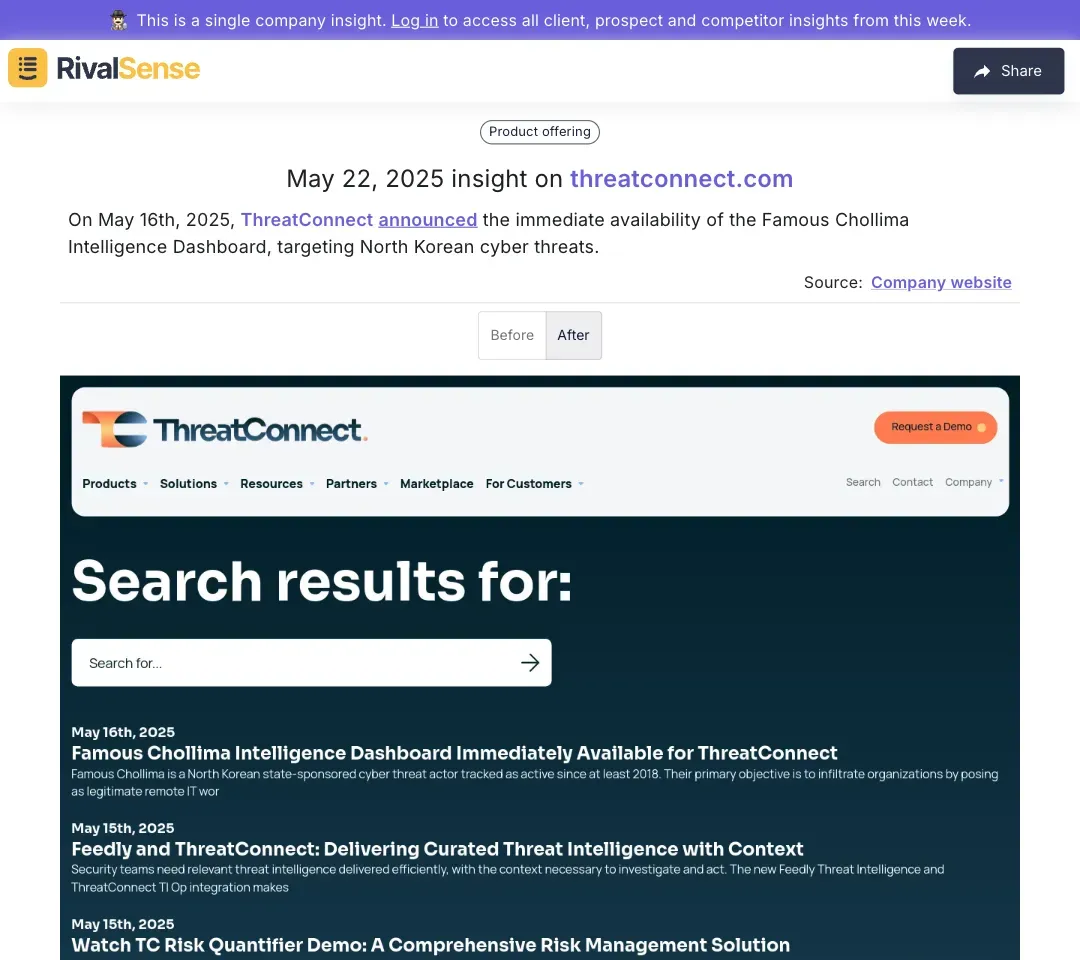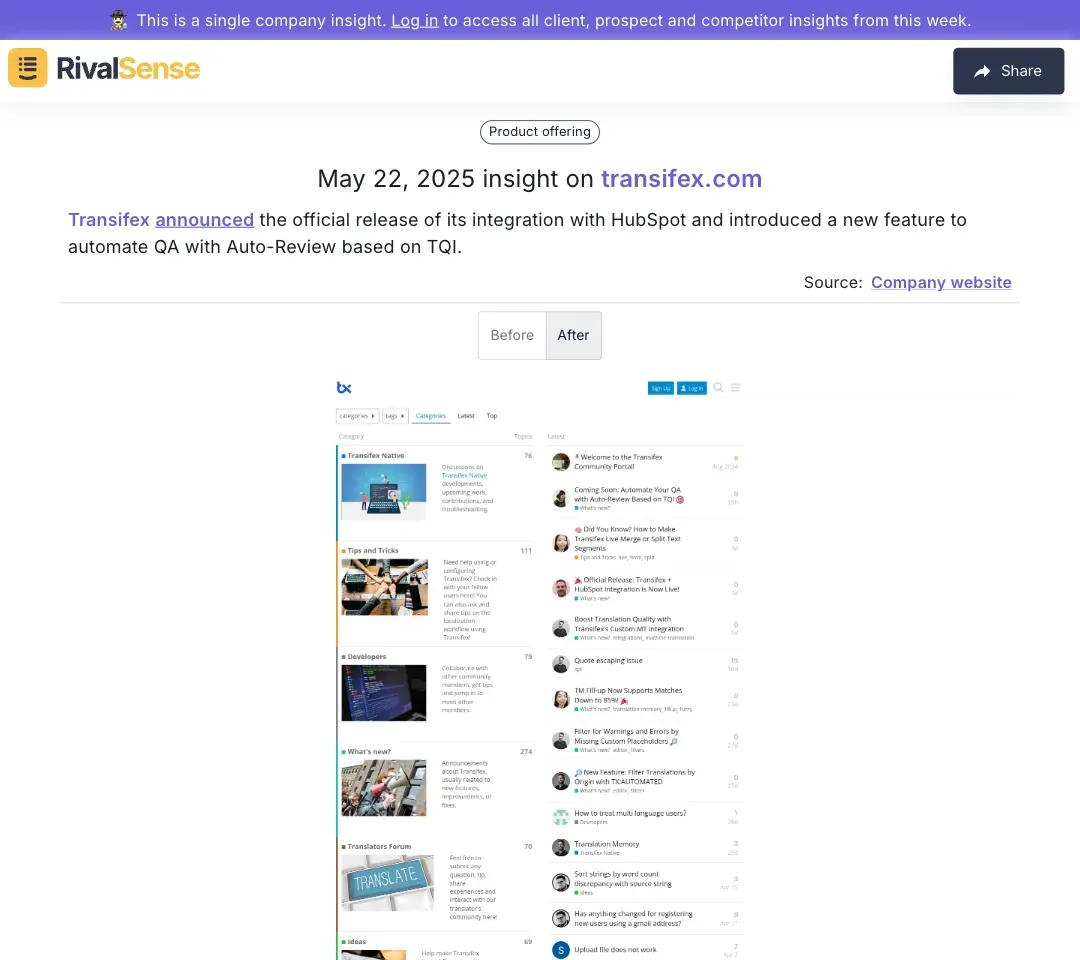How to Leverage Competitor Product Insights to Enhance Your Own Strategy: 5 Actionable Steps
🔥 Did you know? According to Forrester, insight-driven firms grow 8x faster than global GDP, while laggards lose market share to rivals. In today’s hyper-competitive B2B landscape, understanding your competitors’ moves isn’t optional—it’s survival. Here’s how to turn their product launches, pricing shifts, and partnerships into your strategic advantage.
Step 1: Map the Full Competitive Landscape (Yes, Even Indirect Players)
Most companies track direct competitors but ignore indirect threats—tools that solve the same problem differently or target overlapping customer segments. For example:
- Direct competitor: A cybersecurity platform like CrowdStrike vs. SentinelOne.
- Indirect competitor: A compliance automation tool that reduces the need for manual threat monitoring.

ThreatConnect’s May 16 launch of the Chollima Dashboard targets North Korean cyber threats—a niche gap. But indirect players might address the same pain points with AI-driven compliance tools.
Actionable Checklist:
✅ Audit competitors’ websites, social media, and review platforms (G2, Capterra).
✅ Use tools like RivalSense to track keyword overlaps in their messaging.
✅ Analyze adjacent industries for disruptive solutions (e.g., AI-driven compliance tools vs. traditional threat detection).
Step 2: Reverse-Engineer Their Product Positioning
Competitor launches reveal unmet customer needs. Take Transifex, which recently integrated with HubSpot and added Auto-Review QA:

Insight: They’re targeting marketing teams needing seamless localization workflows. Their moves signal demand for:
- Automation (reduce manual QA)
- CRM alignment (unify customer data)
Your Playbook:
- Compare feature gaps: Does your tool lack integrations or automation?
- Refine messaging: Highlight “90% faster localization workflows” instead of generic “ease of use.”
Step 3: Benchmark Pricing & Packaging (Without the Guesswork)
Cyble’s May launch of Cyble Titan offers endpoint protection for 500–50,000 endpoints:

Key Takeaways:
- Scalability is a selling point (targeting mid-market to enterprises).
- Tiered pricing aligns with endpoint volume, not just user seats.
| Your Pricing Audit | Cyble’s Strategy |
|---|---|
| Flat-rate plans? | Volume-based tiers |
| User-based pricing? | Endpoint-focused |
| Free trials vs. demos? | Enterprise-tailored trials |
Act Fast: If competitors adopt usage-based pricing, test a hybrid model (base fee + variable costs).
Step 4: Tap Real-Time Intelligence Tools
🕒 Speed matters: 73% of companies say reacting within a week to competitor moves is critical (Gartner). Tools like RivalSense automate tracking of:
- Product launches
- Pricing updates
- Leadership changes
Pro Tip: Attend competitors’ webinars (e.g., ThreatConnect’s Chollima demo) to gauge their messaging tone and Q&A pain points.
Step 5: Anticipate Trends, Don’t Just React
Competitor launches hint at broader shifts. For example:
- Cyble Titan’s AI focus → Endpoint security is shifting from signature-based to predictive AI.
- Transifex’s HubSpot integration → Demand for unified martech stacks is rising.
Build a Trend Radar:
- Cluster competitor updates by theme (AI, compliance, etc.).
- Allocate R&D resources to match (e.g., 20% budget to AI features).
- Position your roadmap as “the future” in marketing campaigns.
🚀 Ready to Outmaneuver Competitors?
RivalSense delivers weekly competitor reports with product launches, pricing shifts, and partnership alerts—so you’re always one step ahead. Try RivalSense Free and get your first report today.
📚 Read more
👉 How Strategic Partnerships Reveal Hidden Market Opportunities: A Competitor Analysis Case Study
👉 Regulatory Compliance Oversights in Competitor Analysis That Could Cost Your Business
